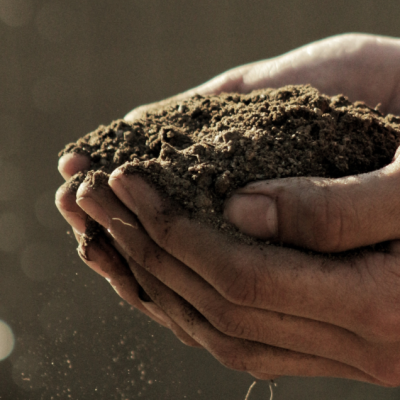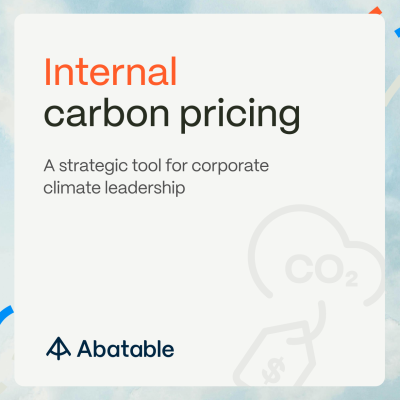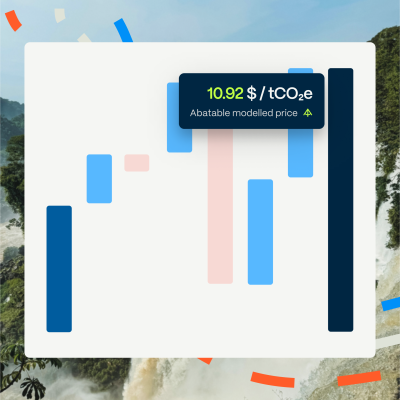This year’s El Niño has been supercharging climate change impacts around the globe. Here, Daniel Fisher argues that the phenomenon should act as a wake-up call for effective climate change action, with nature-based solutions a critical component.
On 4 July this year, the World Meteorological Organization (WMO) declared that an El Niño had developed over the tropical Pacific for the first time in seven years.
The event has already resulted in significant climatic disruptions, and the WMO and the US’ National Oceanic and Atmospheric Administration (NOAA) anticipate it will continue to be “moderate to strong”. More recently, the US’ Climate Prediction Center forecast an 80% chance this El Niño could continue through the Northern Hemisphere spring until May 2024 at the earliest.
Rewind…
But let’s take a step back – what exactly is an El Niño?
Part of the El Niño–Southern Oscillation (ENSO), El Niño is a naturally occurring large-scale climactic phenomenon involving warming ocean temperatures in the central and eastern equatorial Pacific. These are coupled with related changes in the overlying atmosphere, which extend through ‘teleconnections‘ to other regions of the world.
El Niño, similar to its opposite cousin La Niña (which sees cooler-than-average sea-surface temperatures in the Pacific), occurs on average every two to seven years and usually lasts nine to 18 months.
El Niño events are typically, but not only, associated with increased rainfall in parts of southern South America, the southern United States, the Horn of Africa and central Asia. In contrast, the phenomenon can also cause severe droughts in Australia, Indonesia, parts of southern Asia, Central America and northern South America (see graphic below).
During the boreal summer, El Niño’s warm water can fuel hurricanes in the central and eastern Pacific Ocean and hinder hurricane formation in the Atlantic Basin.
Although El Niño is a naturally occurring climate pattern, this year it is playing out in uncharted waters with a long period of unusually high sea surface temperatures and dramatically reduced Antarctic sea ice.
Thus, the impacts of this El Niño could be very different from previous iterations.
A peek at 1.5C
El Niño-enhanced climate impacts have already played out in disastrous ways.
A few notable headlines so far this year include the fact July was the hottest month ever recorded, with average global temperatures reaching 16.95C. Heatwaves spread across North America, Europe and China. In contrast, Afghanistan saw temperatures of -28C, resulting in 78 deaths and 77,000 livestock perishing. We saw floods wreck California and devastating wildfires tear through Greece, Canada, Turkey, Spain and Hawaii.
Googling ‘extreme weather events 2023’ will give you a list of events as long as your arm.
I was fortunate enough to travel to India in September this year. I moved from the North to the South of the country after the monsoon season, when the rains should have brought water flowing through the country. What I saw was dry river bed after dry river bed, a sobering site given the fact that the country is about to go into many months of little-to-no rainfall.
There is now a 99% chance that 2023 will be the warmest year on record. If you want to know what a 1.5C might feel like, then look no further.
Health impacts
This is clearly not just about a wet summer holiday and the increased costs of a holiday abroad. The implications of El Niños, and this one more than ever, are profound and wide-reaching.

Source: World Health Organisation
To give a sense of the impacts on health alone, the increased flooding in certain regions increases the likelihood of the following:
- Direct injuries and fatalities
- Vector-borne diseases
- Water-borne diseases
- Disruption of health services
- Mental and psychosocial effects
Then you have the drought, wildfires and heat, which will reduce access to healthcare and can increase:
- Malnutrition
- Communicable diseases
- Water-borne diseases
- Respiratory diseases and heat stress
The wet conditions described above are perfect for infections transmitted by ‘vector’ organisms such as insects and arachnids.
Mosquito-borne illnesses, such as malaria, will almost certainly see an increase with rising temperatures and longer wet seasons. This will increase the insects’ breeding seasons and, in many regions, El Niño will last long enough for mosquitos to find a new habitat and get established. This will mean an expansion in their geographic range to areas we currently think impossible for them to survive.
Cholera, a water-borne disease, is another area of concern. Paradoxically, both regions that experience more and less rain under El Niño will be affected. Increased rainfall and consequent flooding can spread cholera from open sewers into drinking water systems. On the other hand, drought increases cholera prevalence in poorer countries because fresh water sources become scarcer and more restricted, forcing populations to practise poor personal hygiene to conserve what water is available and to turn to unsafe drinking water.
Broader impacts
The risk to conservation efforts is also significant. According to Marioldy Sánchez Santivañez, Director at Peruvian NGO AIDER, the organisation is facing the fact that forest communities are unprepared.
Abnormal rainfall is forecast for the first quarter of 2024 in Peru, which – among other things – is expected to significantly impact agriculture.
‘We are expecting that next year when the rainy season starts, the Ucayali region [where AIDER has a REDD+ project] will be significantly affected [by El Niño],’ said Santivañez. ‘There are 160,000 people in the region who are directly exposed to flooding and who could be affected very seriously… we anticipate there may be catastrophic effects from anomalous flooding, and this will affect crops and food security.’
‘We have a technical package for reforestation to make the landscape more tolerant to flooding, but you can still expect some impact on the forest plantations,’ she said.
On top of this, recent research indicates El Niño may also have an impact on these ecosystems’ ability to sequester carbon. A study from Abatable’s Dr Amy Bennet shows that the 2015-2016 El Niño resulted in forests in tropical South America ceasing to act as a carbon sink – which could well happen again this year.
Finally, there is the looming threat that continued environmental change also increases the risk of future pandemics. Increased temperatures will increase the spread of infectious diseases, while further encroachment on the natural world through deforestation – which is still increasing – raises the chances new pathogens will find their way into human hosts.
What are the solutions?
This El Niño and its impacts offer us a glimpse of what a future altered by climate change might look like, a dress rehearsal if you will, and it’s not pretty.
The world should use this as an opportunity to learn and become more resilient. For example, during this El Niño our weaknesses can be observed and explored, allowing us to more accurately pinpoint where diseases may appear and to prepare communities for the projected increase in environmental pathogens.
Our increased understanding could also enable us to improve crop yields and provide early warnings of drought and famine risk, as a result getting supplies to high-risk areas before people are trapped or, if needed, evacuate areas with time to spare.
It is important to note that breaching the 1.5C warming target is not a foregone conclusion. According to the International Energy Agency, it is still possible to limit warming to this level. We can protect, conserve, re-forest, redistribute and responsibly finance our way back from this bleak situation.
We work in the business of nature. Nature is the key to increased climate resilience: flood protection with mangroves, medicinal creation for current and new diseases, food production and crop resilience, shelter from extreme weather events, happiness, adaptation and much, much more. To effectively mitigate and adapt to climate change we need to stop nature being destroyed and bring back what has already been destroyed and degraded.
The voluntary carbon market (VCM) can help do just that by re-distributing private capital from high-polluting and degrading activities to activities in line with helping communities and nature. It is a critical tool to get private capital flowing to the people and places that need it, who have not received this financing due to the inequitable and unjust flow of global capital.
And for those of you who say the VCM isn’t perfect, you’re right. But it is the best we currently have. Given the pressing need to bend the global emissions curve, we should all work to make the market as effective as we can as there simply isn’t time to go back to the drawing board.
El Niño should be used as a wake-up call. A reminder of the need to double down on emission-reduction efforts and to protect nature. This is essential to safeguard not just the planet’s health but also the health of the people living on it.














































































































